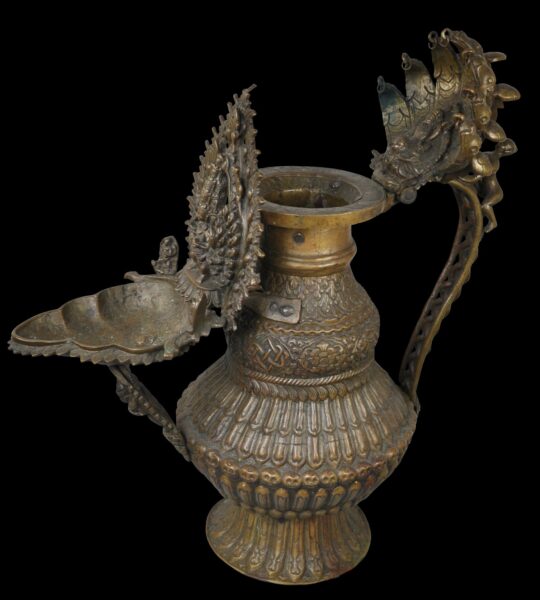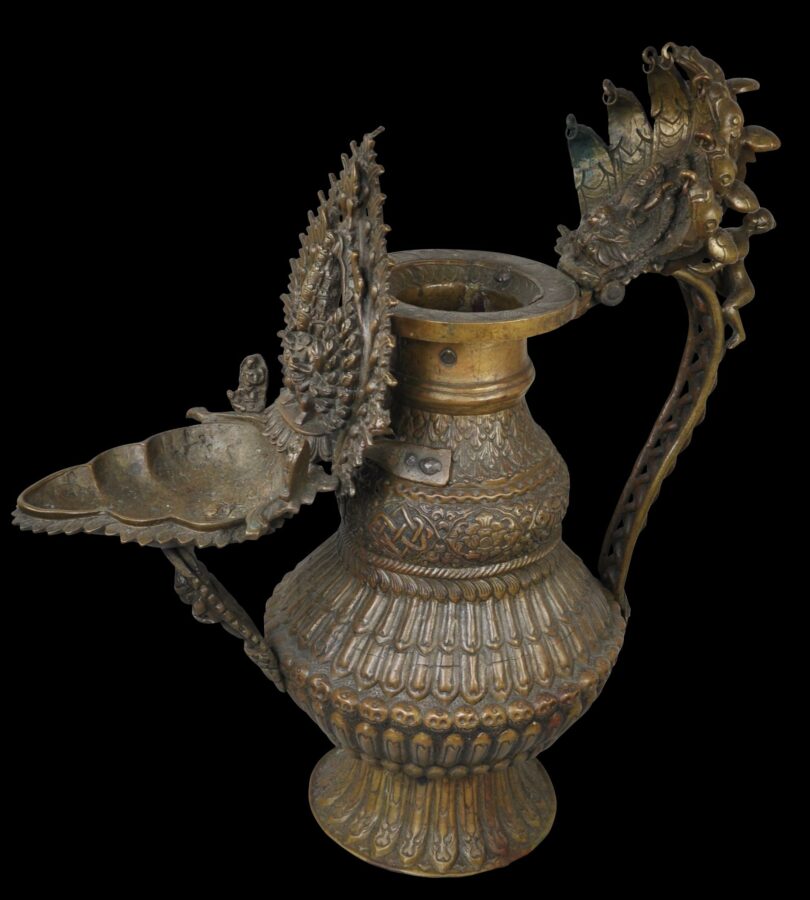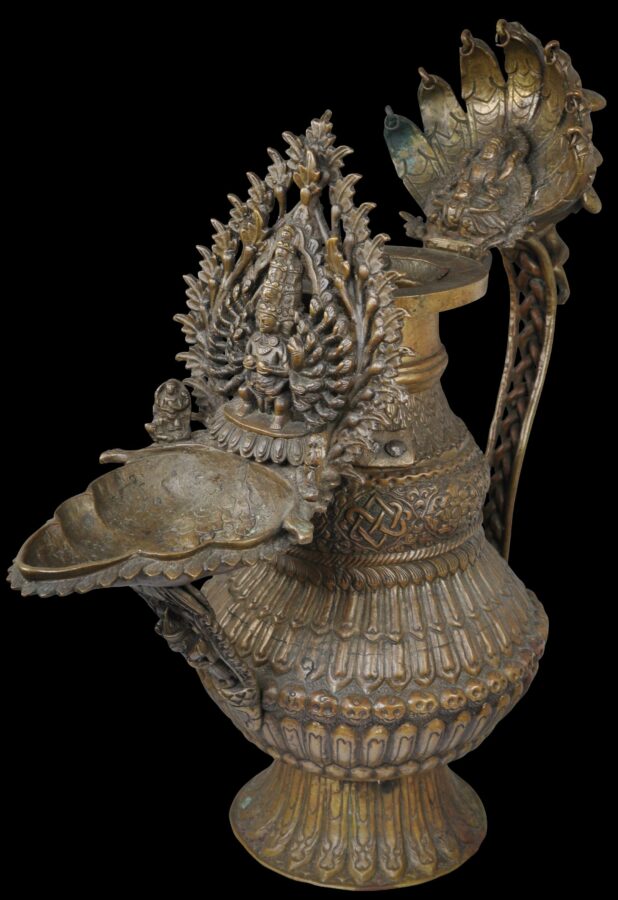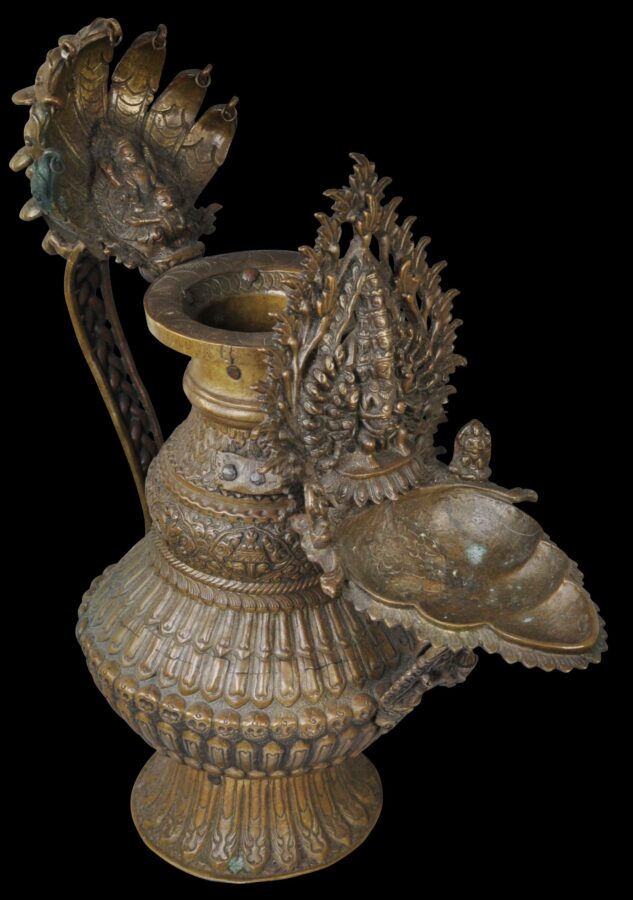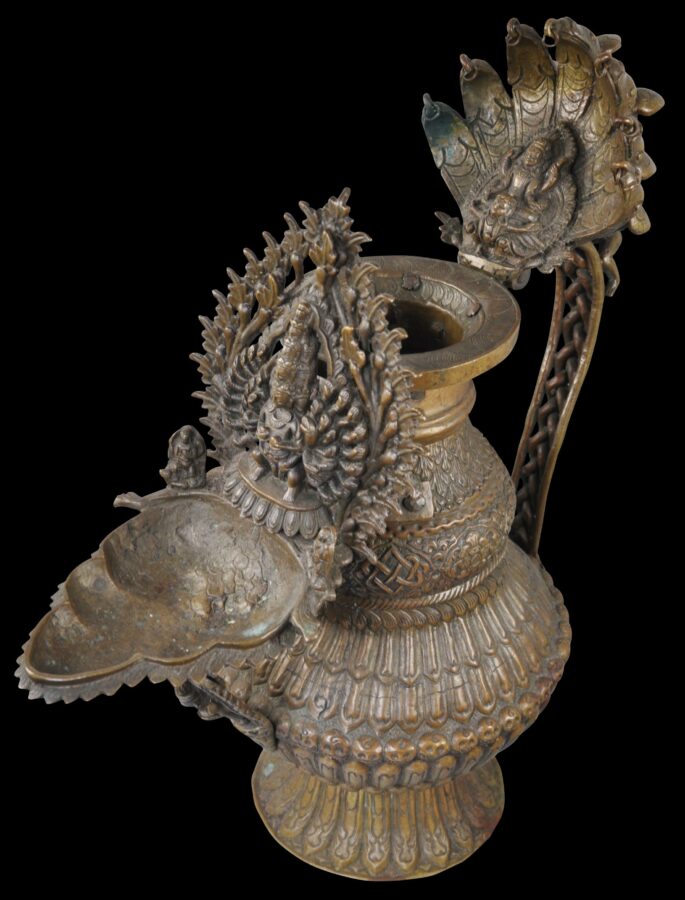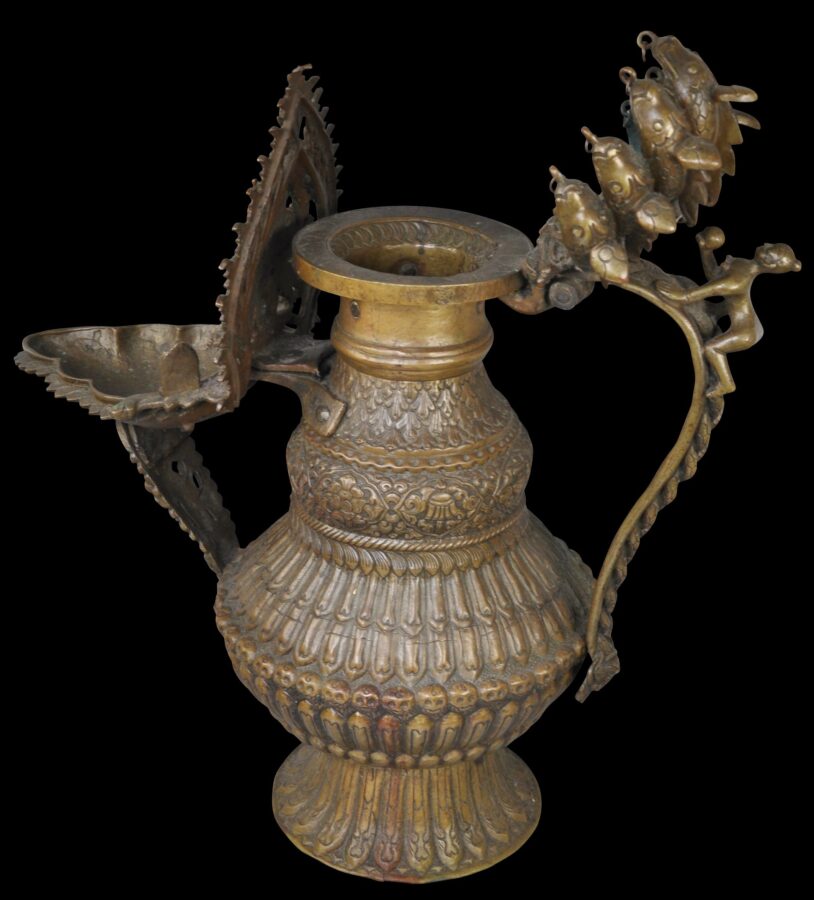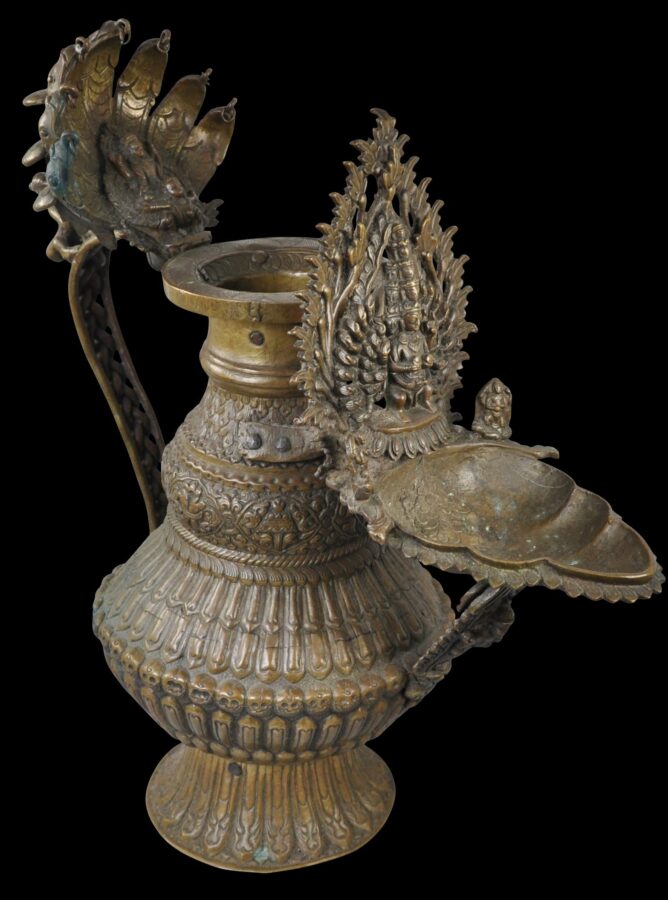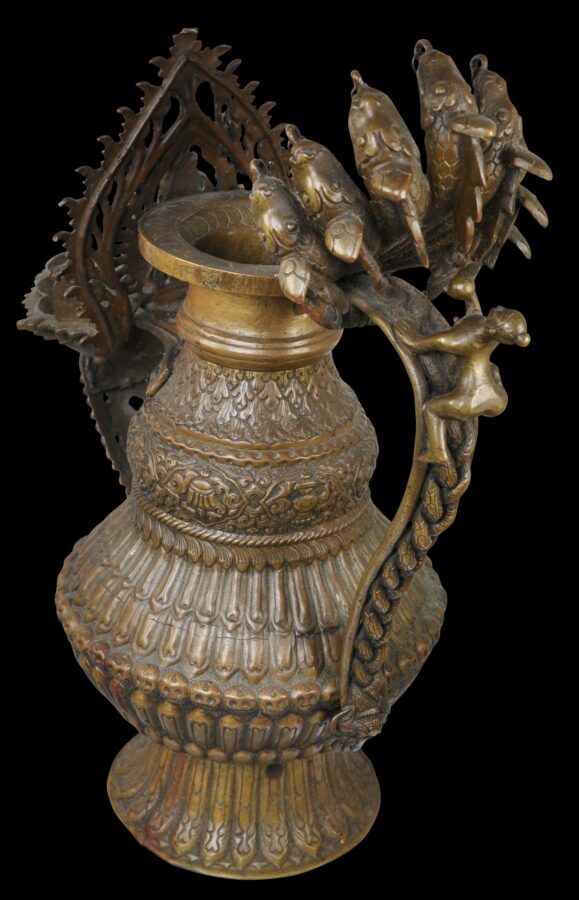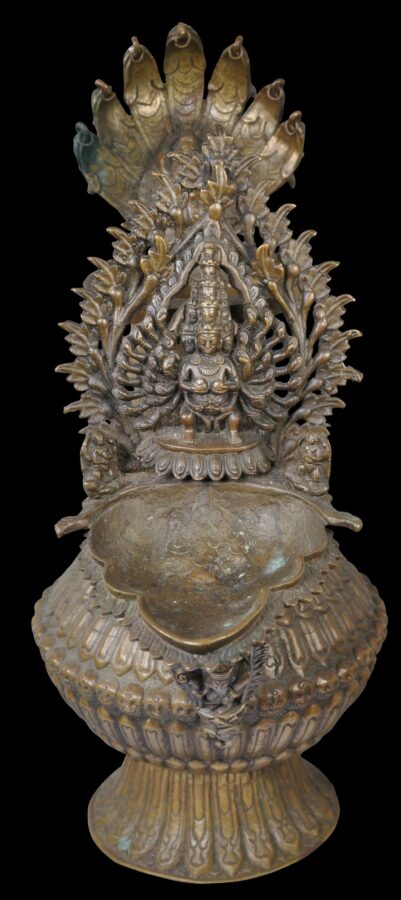Enquiry about object: 9185
Nepalese Elaborate Ritual Lamp (Sukunda)
Kathmandu Valley, Nepal 19th century
height: approximately 39cm, length (from lamp dish to handle): 36cm, width: approximately 18cm, weight: 3,646g
Provenance
UK art market
Sukunda lamps are indigenous to the Newar people of the Kathmandu Valley. They are used for a wide range of religious and social purposes. The vase or pot part of the lamp is used for storing the oil – usually mustard oil produced locally. This is ladled out and put on the shallow dish that projects from the front of the vase, where a wick is burned using the oil as fuel.
This is a particularly fine example of a sukunda lamp. It is of hammered, cast and chased brass with copper rivets.
The baluster-form body and flared foot are chased with ribs to emulate lotus petals. A raised mid-section around the body is decorated with a border of skulls.
The neck of the vase is decorated with further petal motifs, and also with the eight Buddhist emblems – the perfect demonstration of the syncretic or dual nature of Hinduism is the Kathmandu Valley with it absorption of many Buddhist elements.
The handle comprises a pierced, plaited stem designed as a cobra’s body with a lower terminal of an inverted kurtimukha mask. The top of the handle has a figure Balakrishna crawling up the handle and holding a butter ball in his right hand. It is further surmounted by a large, seven-headed cobra – each of these terminates with a ring on which a decorative dangle would have been present. Nestled within the hooded canopy is an image of a Vishnu, wearing a tall crown, and astride Garuda his celestial vehicle or vahana, all within an arched frame. The handle is attached to the top of the vessel via a hinge, allowing the handle some movement.
The lamp dish (the dalupa) has been beautifully cast as a leaf. Two deities are on either side of the dish.
The pierced backing plate comprises the Nepalese Hindu deity Biswarupa, a composite deity with many arms and heads, surrounded by a pierced, leafy aureole.
A related example is illustrated in Bazin (2021, p. 206).
The lamp dish is supported underneath by a pierced strut cast with a deity – probably Bhikshatana – Shiva in his manifestation as a mendicant.
Sukundas play an important role in most Newar rituals, including birth, marriage and death rituals. The larger examples – those around 30cm in height – are reserved for marriage ceremonies. They are carried in the processions from the groom’s to the bride’s house and the return procession when the bride leaves her parent’s home. The example here would have been commissioned by a particularly wealthy Newar family.
This sukunda has an excellent patina. It is a splendid and highly decorative piece.
References
Bazin, N., et al, Nepal: Art de le Vallee de Katmandou, Musee National des Arts Asiatiques – Guimet, 2021.
Friedman, M.S., Nepalese Cast Religious and Cultural Lamps, Pilgrims Publishing, Volume 2, 2005.
Lama, M.N., Ritual Objects & Deities: An Iconography on Buddhism & Hinduism, Lama Art, 2003.
Pal, P., Art of Nepal, Los Angeles County Museum of Art, 1985.
Sakya, Jnan Bahadur, Short Description of Gods, Goddesses and Ritual Objects of Buddhism and Hinduism in Nepal, Handicraft Association of Nepal, 2000.


